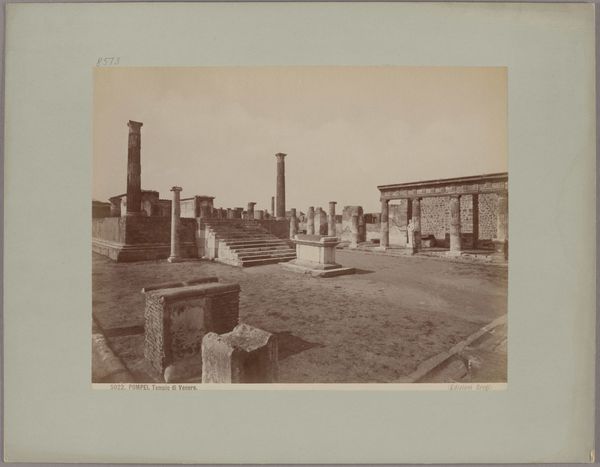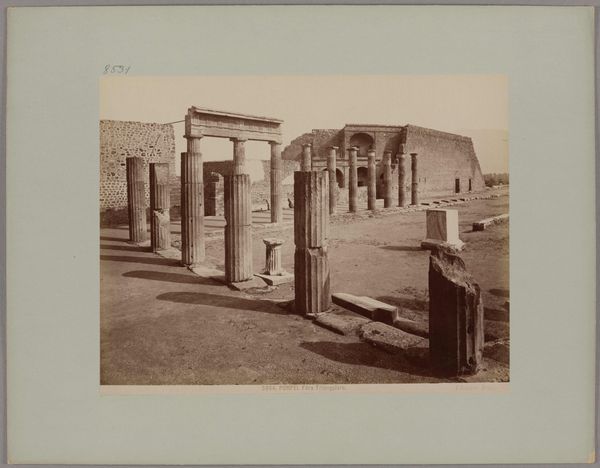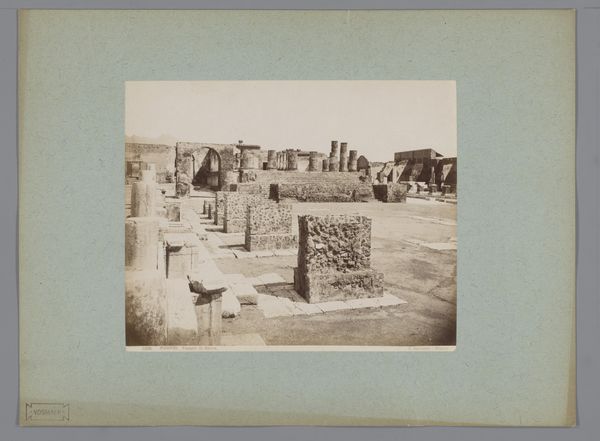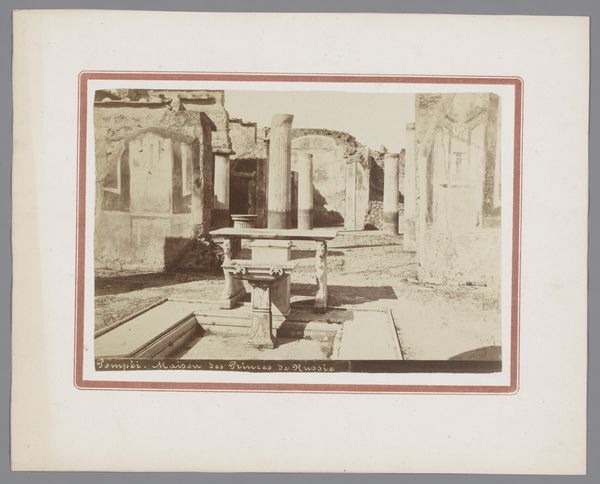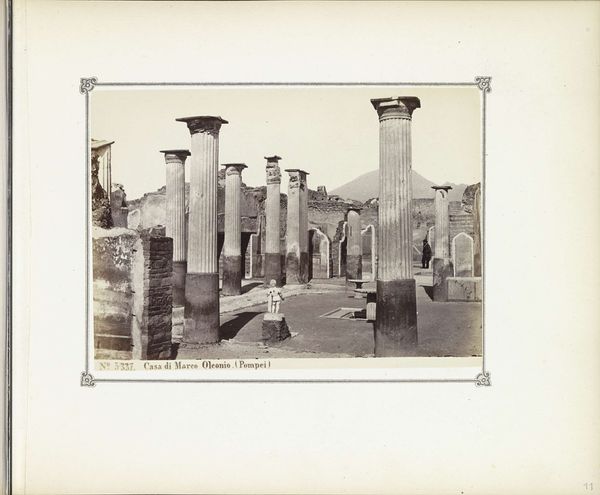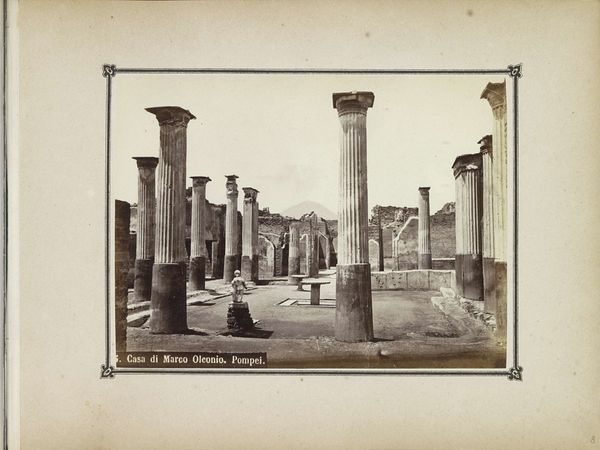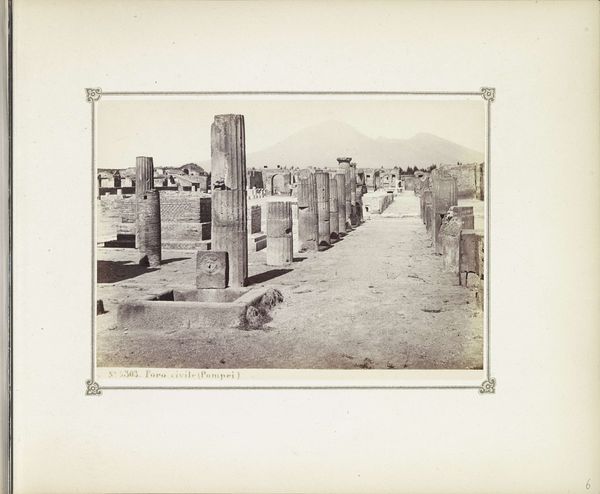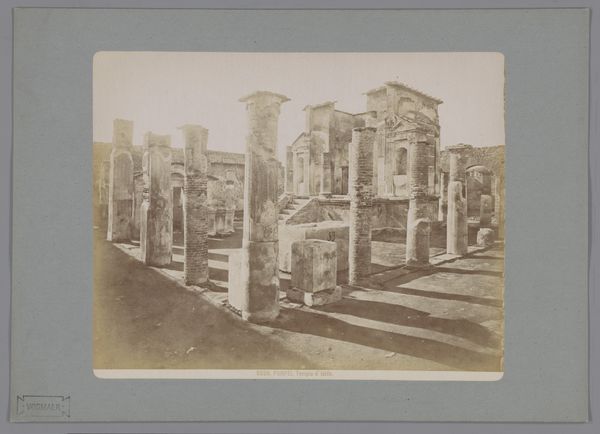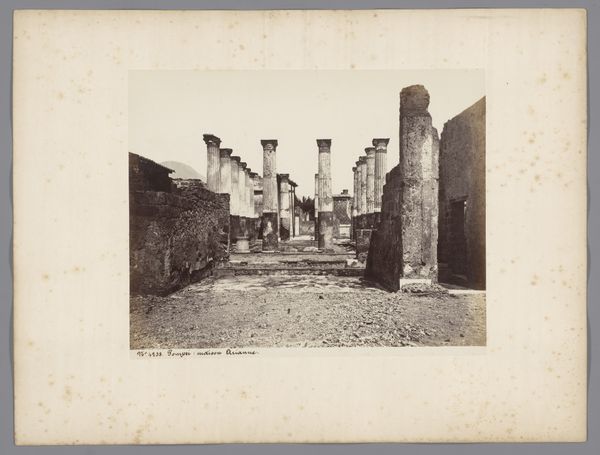
print, photography
#
photo of handprinted image
#
aged paper
#
ink paper printed
# print
#
landscape
#
photography
#
ancient-mediterranean
#
cityscape
#
realism
Dimensions: height 304 mm, width 402 mm
Copyright: Rijks Museum: Open Domain
Editor: Here we have Giorgio Sommer’s “Ruïnes te Pompeï, Italië,” a photograph printed sometime between 1857 and 1875. It depicts the ruins of Pompeii in a sort of stark, melancholic light. The remaining columns suggest a grand architectural plan but their fragmented condition inspires, in me, a sense of loss. What can you tell us about this image, Professor? Curator: It's more than just a document of ruins. Sommer was creating this image at a time when archaeological digs, like those at Pompeii, captured the imaginations of the European public. The "Grand Tour" was popular and places like Pompeii represented the appeal of classical education. Editor: So the ruins become less about destruction, and more about rediscovering our cultural roots? Curator: Precisely! But also, consider how photography itself was a relatively new medium. Sommer is using it to both document and romanticize history, feeding a market for exotic "views." Ask yourself: what are the politics inherent in representing ancient cultures in this way? Who benefits from these representations? Editor: So, he’s participating in the construction of a specific historical narrative through the photograph itself? A narrative aimed at an elite European audience? Curator: Absolutely. Think about the choices he made in composing the shot: the angle, the light, even what he chose to leave *out* of the frame. Editor: That's a lot to consider, more than just old stones! I never would have considered how deeply intertwined photography can be with the larger power structures of its time. Thanks! Curator: And I am reminded of how profoundly photography shaped the Western gaze on the ancient world. Food for thought indeed.
Comments
No comments
Be the first to comment and join the conversation on the ultimate creative platform.
